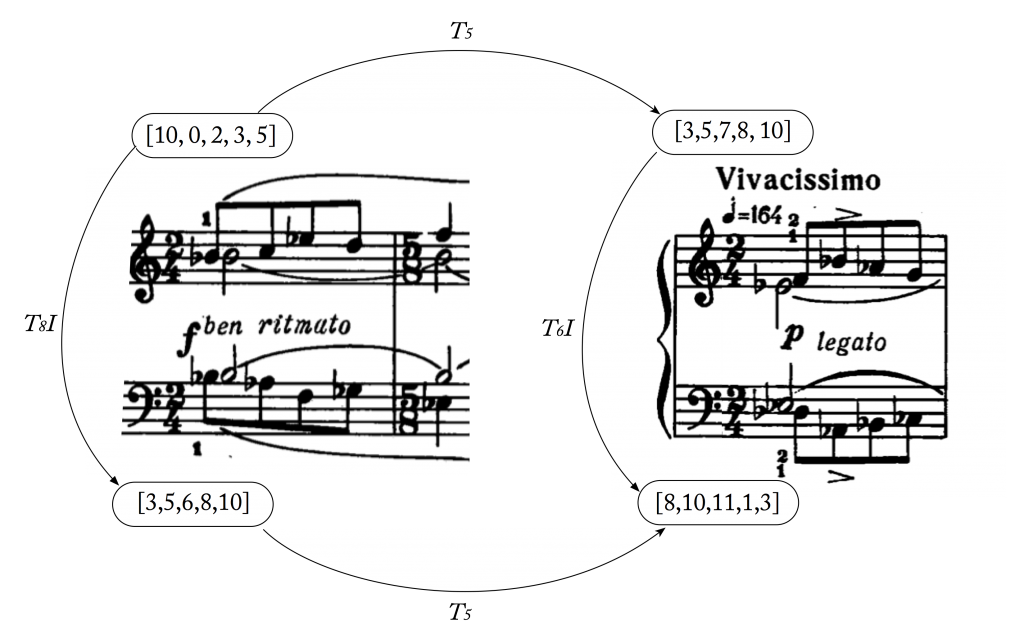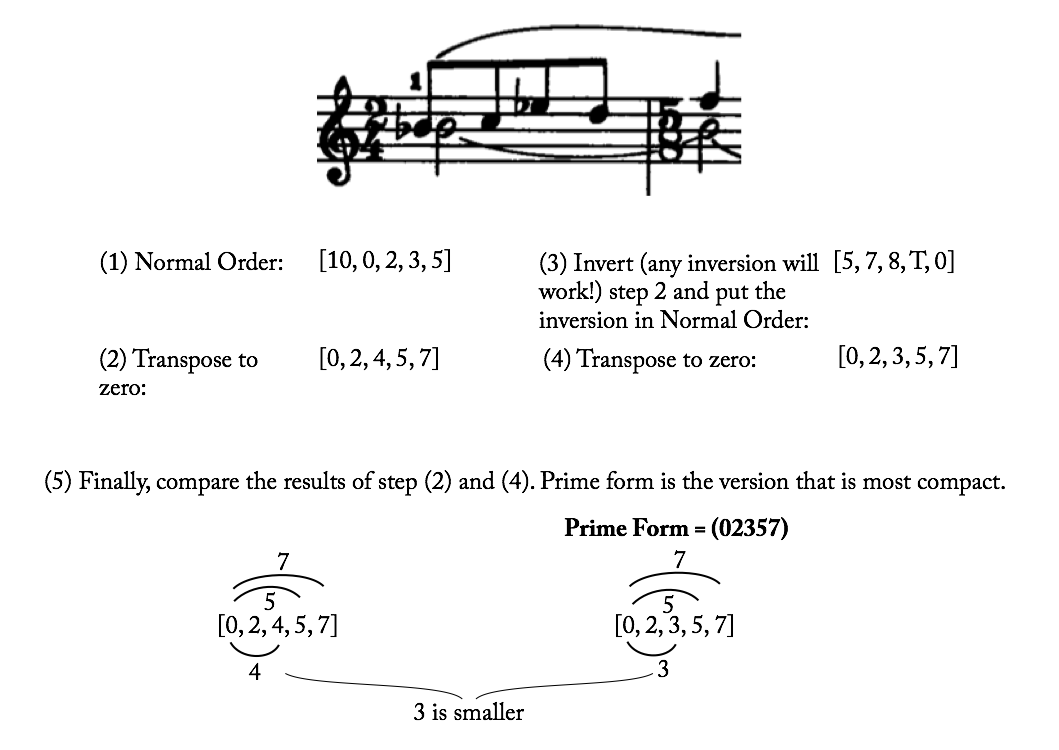Set Class and Prime Form (1)
Lots of concepts in pitch-class set theory are best viewed along a sliding scale of “concreteness” or “abstractness.” A concept like pitch, for example, is very concrete, while pitch class is somewhat more abstract. We can perform a pitch, but we can’t really perform a pitch class. We’ve seen similar examples in the intervallic realm. Ordered pitch intervals are associated with a very specific sound (e.g., +15); unordered pitch-class intervals (e.g., interval class 1) are less vivid or real. A basic concept in pitch-class set theory is that these levels of concreteness and abstractness encompass not only pitch and interval, but groups of pitch classes as well. These groups of pitch classes are called pitch-class sets.
We’ve already seen sets of pitch-classes, though we haven’t really been calling them that. When we extract a group of notes from a passage of music and put them in normal order, that group of notes is a pitch-class set. As we’ve seen in class, one very interesting way of looking at a lot of post-tonal music is by studying the transpositional and inversional relationships between pitch-class sets. In the short example below (from Bartók’s “Subject and Reflection”) you’ll notice that the right hand of the two passages is T5-related, as is the left-hand. Within each passage, the right and left hands are T8I _and _T6I related, respectively.
In order for a pitch-class set to be transpositionally or inversionally related to some other pitch class set, they must share the same collection of intervals. This is most easily grasped by remembering that all major and minor triads have the same interval content (M3, m3, and P5). Major triads are transpositionally related to one another, while major and minor triads are inversionally related to one another. The same observation applies in Bartók’s “Subject and Reflection.” The four pitch-class sets in those two passages all have the same intervallic content and that’s why we can label transpositional and inversional relationships between them.
All pitch-class sets that are transpositionally and inversionally related belong to the same set class, and they are represented by the same prime form. We follow a simple process to put a pitch-class set in prime form:
- Put the pitch-class set in normal order.
- Transpose it so that the first pitch class is 0.
- Invert the results from step 2 (any inversion will work) and put the result in normal order.
- Transpose it so that the first pitch class is 0.
- Compare the results of steps (2) and (4). Prime form is the most compact version.
The example below walks demonstrates using the motive from Bartók’s “Subject and Reflection.”
Share
